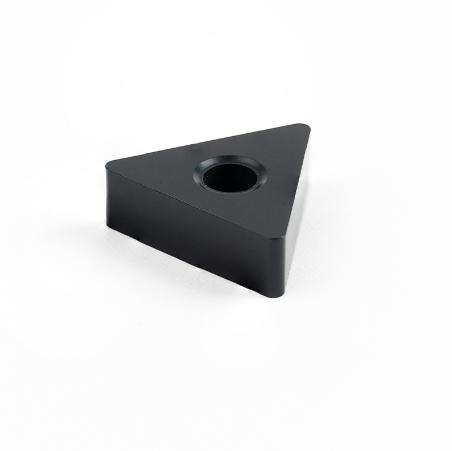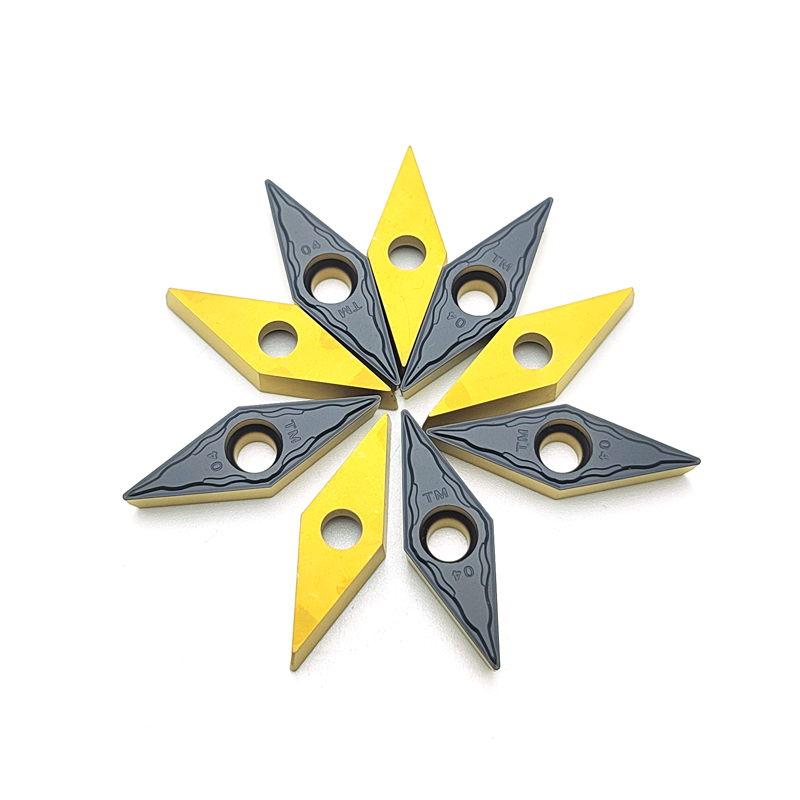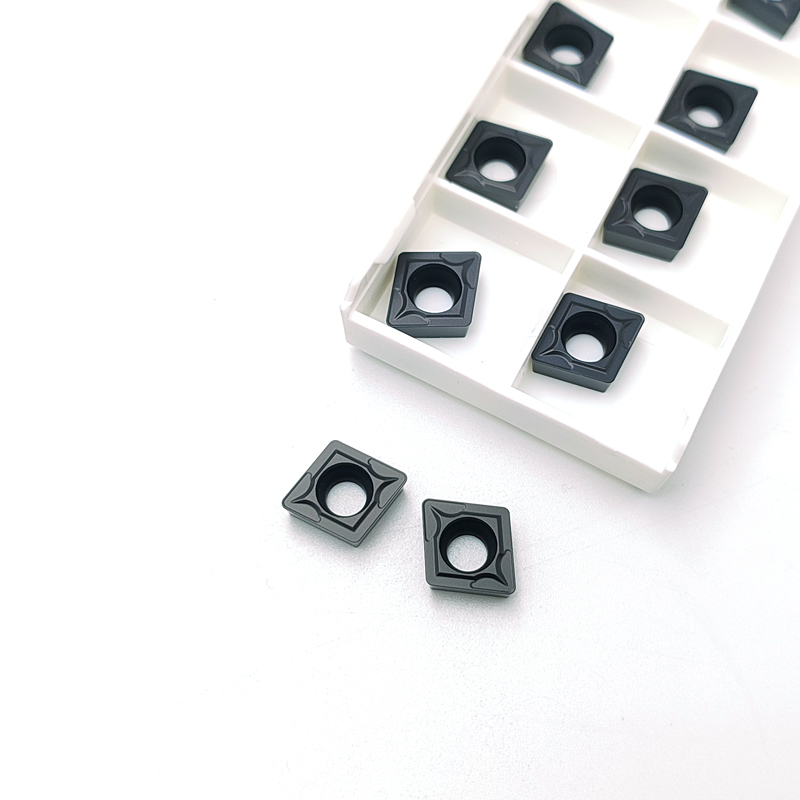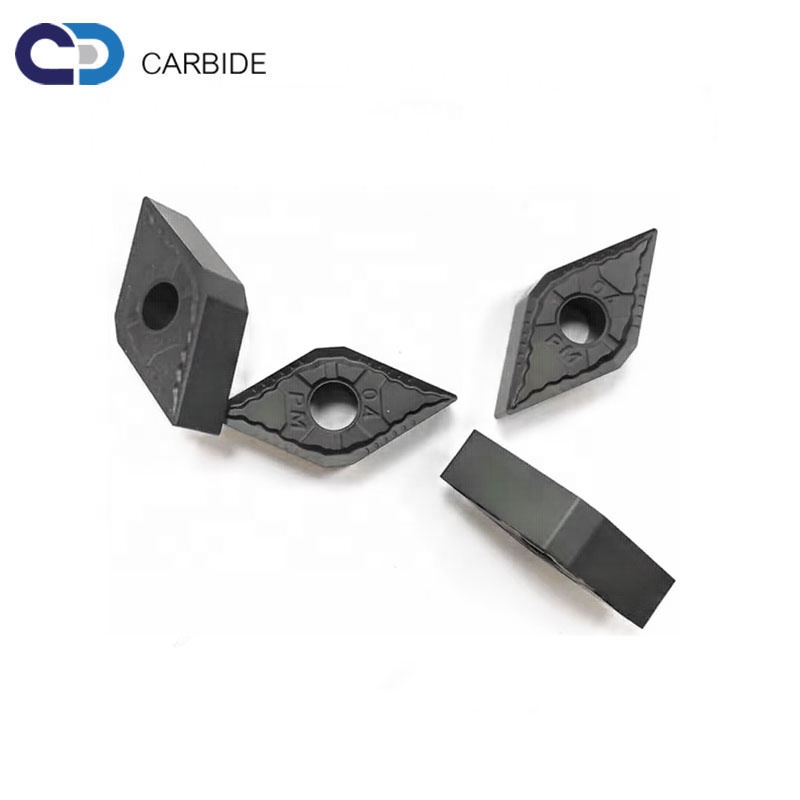Guhindura insmos: guhitamo neza mu isi
Guhindukanibikoresho byibikoresho bikoreshwa muri lathe. Imikorere yabo nyamukuru nukukuraho ibikoresho birenze akazi binyuze mumurongo ugereranije hagati yumurimo uzunguruka hamwe no kwinjizamo ibikorwa muburyo bwifuzwa nubunini. Ni nkigikoresho cyiza cyo kubaza gishobora kugabanya ibikoresho bitandukanye kandi bikagira uruhare runini mubikorwa byo gukora imashini.
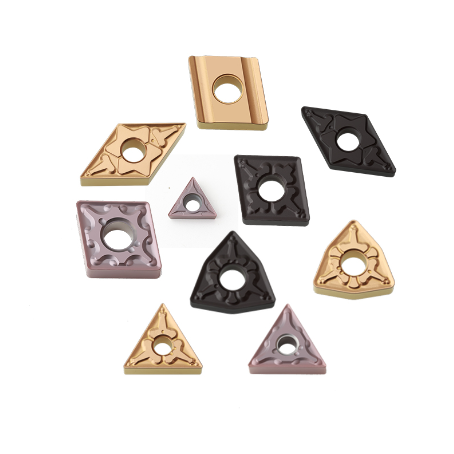
Ugereranije nibikoresho gakondo, karbide ihindura ibice bifite ibyiza bikurikira
1. Gukomera kwinshi no kwambara:
Gukomera kwa karbide ni hejuru cyane kuruta ibikoresho bya gakondo, nkibikoresho byihuta. Ibi bituma Carbide ihindukiriramo gushiramo kuruhande mugihe cyo gukata no kurwanya ibyapa byicyuma, bityo bigaka cyane ubuzima bwa clade. Kurugero, mugihe utunganya nibikoresho byo hejuru nka alloy ibyuma na steel ikomantaro byinjiza carbide biragaragara, bikaba bishobora gukomeza gucamo karbide mugihe kinini, kigabanya inshuro zisimburana.
2. Imbaraga nyinshi n'ubugari:
Ibikoresho bya Carbide ntabwo bigoye gusa, ahubwo ufite imbaraga nubukaze. Mugutunganya guhindura, barashobora kwihanganira imbaraga nimbaraga zaciwe, kandi ntibikunda guswera no kuvunika. Ibinyuranye, ibikoresho gakondo ibikoresho byahinduwe bikunze guhindura no kwangirika mugihe bakorewe imitwaro myinshi, bigira ingaruka ku gutunganya neza no gukora umusaruro.
3. Guhagarara neza:
Umubare munini w'ubushyuhe uzabyara mugihe cyo guhindura, gutera ubushyuhe bwibikoresho kuzamuka. CARBime CARBide ifite ubushyuhe bwinshi kandi itunganya ryumuriro, irashobora gukomeza imitungo myiza yubushyuhe bwo hejuru, kandi ntabwo byoroshye koroshya cyangwa guhindura ubushyuhe bwo hejuru. Ibi bituma imyumvire ya carbide ihindukirira imihindagurikire y'imyitozo ngororamubiri yoroheje yo gukata, gukata no kubindi bikorwa, kandi birashobora kwemeza gutuma ubuziranenge no gusobanuka.
4. Ibisobanuro byinshi hamwe no gucamo imikorere:
Gukora neza kwa CARBide byahagaritswe byinjiza ni byinshi, kandi ubusobanuro bwuzuye, bifite ishingiro ryukuri kandi bifite ireme ryibisobanuro birashobora kwishingirwaho neza. Ibi bituma ibyuma bigera ku gucana neza mugihe cyo gukata, kandi ibikorwa byakorewe bifite ubusobanuro bunini bwuzuye. Muri icyo gihe, gukata gukata karbide yinjiza kandi irwanya ni ntoya, ishobora kugabanya imbaraga zo gukata no gutema imbaraga, no kunoza imikorere yo gutunganya ibikoresho, no kunoza imikorere yo gutunganya imashini.
5.
Impamyabumenyi ya CARBide ihindukiriramo ibice irashobora guhitamo ibikoresho bitandukanye, imiterere, ingano ukurikije gutunganya ibisabwa bitandukanye, kandi bikwiranye n'ibyuma, ibiti bidafite ishingiro, haba ubushyuhe bukabije.
Porogaramu
1.Roughing:
Mu cyiciro giteye ubwoba, guhinduranya ibyiciro bikoreshwa cyane kugirango ukure vuba ibikoresho byinshi. Muri iki gihe, shyiramo impande nyinshi zo gukata no gukomera gukomeye mubisanzwe byatoranijwe, nka kare kare nini ya karbide. Izi mpunge zirashobora kwihanganira imbaraga zinini zo gukata no gukoresha ubujyakuzimu bunini kandi bigaburira kugirango utezimbere imikorere. Kurugero, mugihe imashini zitanga ibice binini bya shaft, bikomeretsa byinjiza birashobora gukuraho ibikoresho birenga kandi bigatuma ibikorwa byegeranye kumwirondoro wanyuma.
2.Semi-finishing:
Icyiciro cya kabiri kirangiye nukugiramura neza urwego rwuzuye hamwe nubwiza bwumurimo ushingiye ku gukomeretsa. Muri iki gihe, impinduka zinjiza zatoranijwe zigomba kuba zifite umutekano mwiza kandi utanga ukuri,Nka karubanda ya diyama yinjiza. Mugihe gikwiye kugabanya ubujyakuzimu no kugaburira ibiciro, aho ukorera utunganijwe ukoresheje ahantu hagaragara hirya no hino yinjiza kugirango witegure kurangiza.
3.Finishing:
Kurangiza bisaba guhindura ibice kugirango ubashe gutunganya neza - uburebure-buke-bubi. Mubisanzwe, ibuye rifite impande zikarishye kandi hatoranijwe ubusobanuro bukabije, nko kwinjiza ceramic cyangwa imitsi yinjiza hamwe namakoperatifitiye neza. Kuri iki cyiciro, kugabanya ubujyakuzimu no kugaburira ni bito cyane, kandi icyuma gikoreshwa cyane cyane gukora gukata neza ku buso bwakazi. Kurugero, mugihe cyo gutunganya ibice-byihariye nkamaboko, guhindukira guhindukira, guhindukira guhindukira hejuru yubuso bwurusobero bugera kuri ra0.8μm cyangwa munsi.
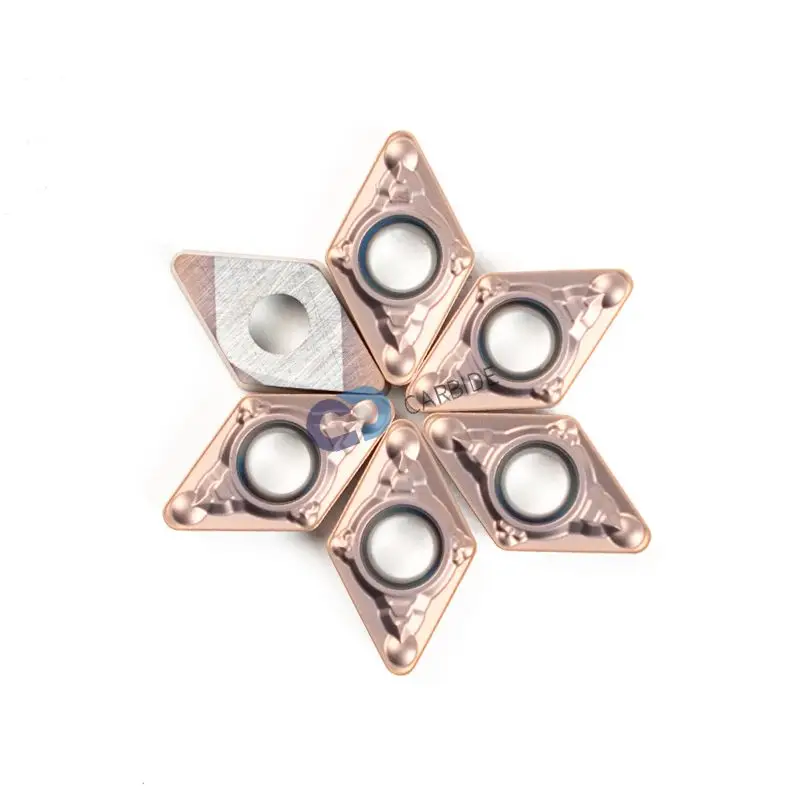
Icyitegererezo
1.Ibikoresho bifatika:Ahantu haza guhindukira blade, ceramic ihindura blaramic, ibyuma ceramic guhindukira blades, nibindi. Gukomera karbide bihinduranya ubukana no gukomera, bikwiranye no gutunganya ibikoresho byinshi; Guhindukira ceramic bihindura imbaraga nyinshi kandi bambara ihohoterwa, bikwiranye no gukata kwihuta cyane no gutunganya ibikoresho bikomeye; Icyuma ceramic gihindura icyuma gihuza ibyiza bya carbide na ceramic, hamwe n'imikorere myiza no kwambara.
2.Gushimangwa n'imiterere:Rusange ni mpandeshatu ni mpandeshatu, kare, diyama, uruziga, nibindi, ibyuma bikwiranye nibihe bitandukanye byo gutunganya, kurugero, urumuri rwicyuma gikwiranye no kurangiza no gutunganya neza.
3.Gushyira mu bikorwa ukoresheje:Harimo guhindukira blade, umwobo wimbere uhindura blade, Gutema urusaku, ibiti byose bihindura icyuma gifite igishushanyo mbonera no gukoresha kugirango uhuze ibyo dukeneye.

Ibicuruzwa
1.Hightray hamwe no gukomera:Gutunga ibitaramo bitandukanye nkibikomere byinshi, wambare kurwanya kimwe no kurangiza kugirango ugere ku kwimuka kwa chip.
2.Oltunced tekinoroji kugirango urebe: Ikariso no kuramba byakozwe binyuze mu ikoranabuhanga mu buryo bwo hejuru cyane kandi rifite imbaraga rusange rusange kimwe n'ubuzima burebure, hamwe no gukata gukata no kwambara.
3.Ibice bikomera kandi byoroshye:Brection yo hejuru kugirango ugabanye kwambara mugutandukana, bidashoboka gutera icyuma gifatanye cyangwa kuvunika.
Ibicuruzwa byacu byerekana
